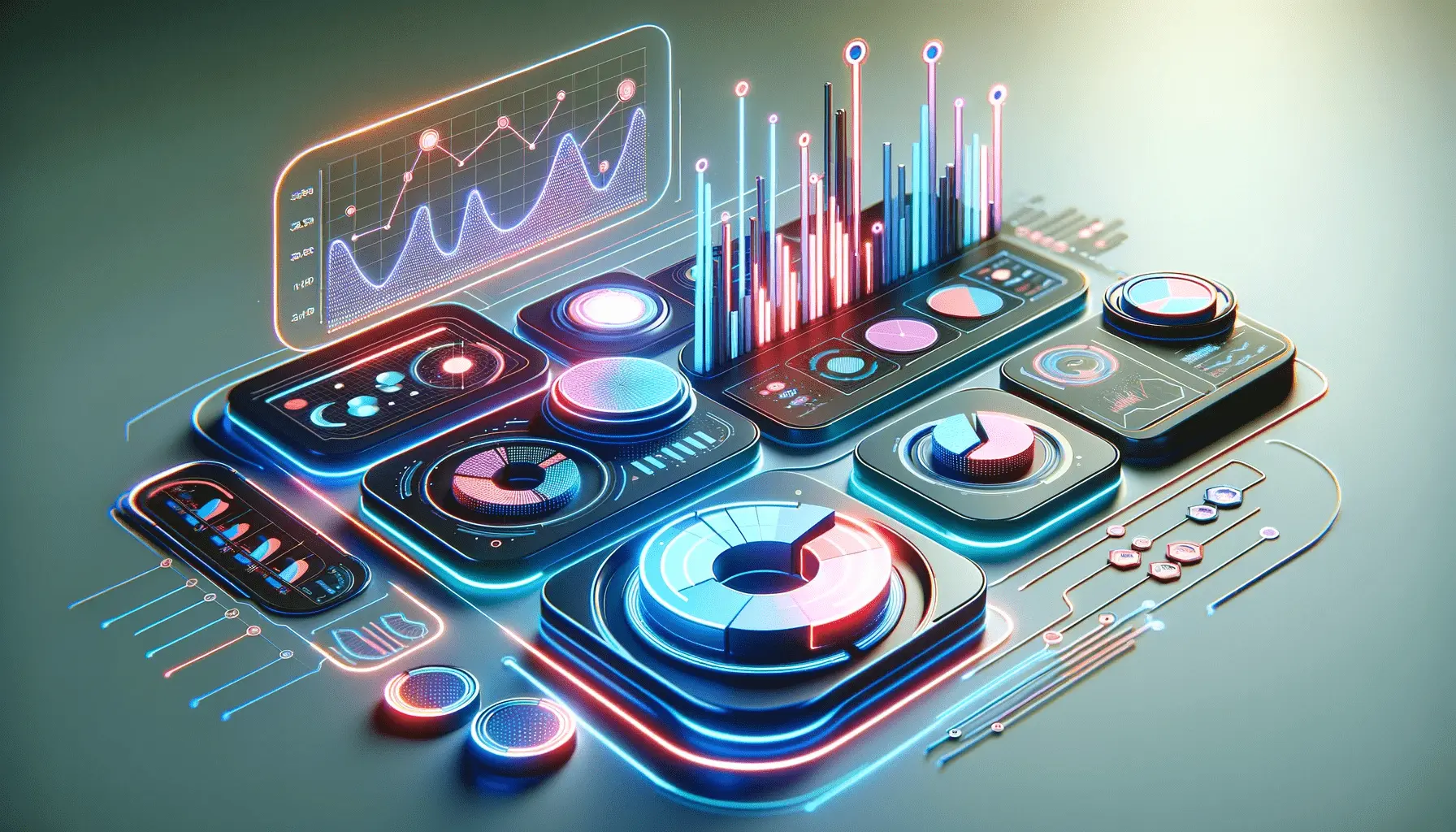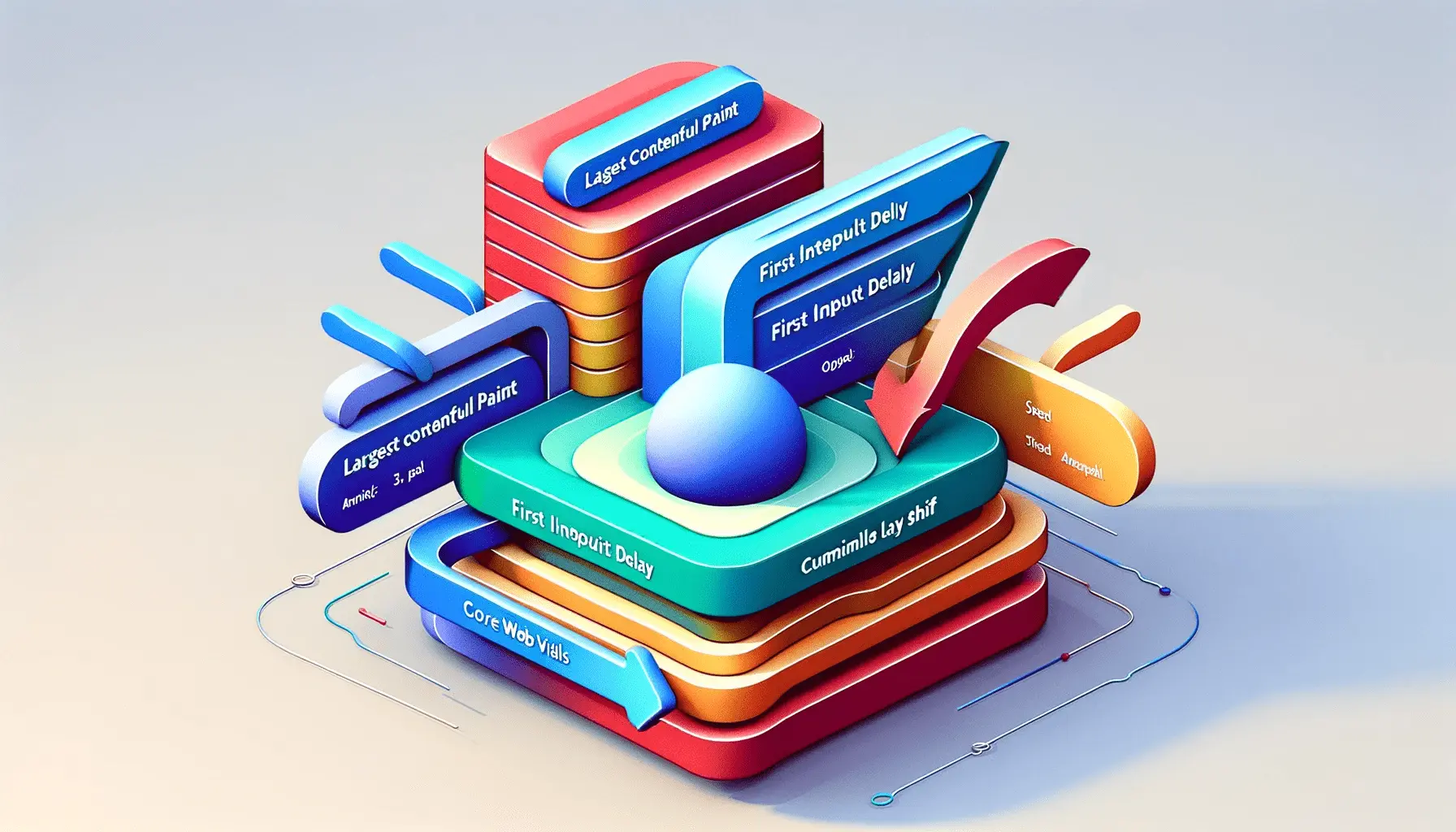In the rapidly evolving field of artificial intelligence, DALL-E stands out as a groundbreaking innovation by OpenAI, pushing the boundaries of what AI can achieve in creative and visual tasks.
This AI model, named with a playful nod to the famous surrealist artist Salvador Dalí and Pixar’s WALL-E, represents a significant leap forward in the generation of images from textual descriptions.
The performance of DALL-E not only showcases the capabilities of current AI technologies but also sets a new benchmark for evaluating the effectiveness of generative models in producing high-quality, diverse, and contextually accurate images.
Understanding the performance metrics of DALL-E is crucial for both developers and users alike.
These metrics not only provide insights into the model’s efficiency and creativity but also highlight the technological advancements in AI-driven image generation.
By analyzing these performance indicators, we can appreciate the depth of research and development that has gone into DALL-E, understand its impact on various industries, and foresee the potential future developments in AI.
This article aims to delve deep into the performance metrics of DALL-E, offering a comprehensive overview of its capabilities, limitations, and the implications of its use in real-world scenarios.
- Introduction to DALL-E and Its Capabilities
- Key Factors Influencing DALL-E’s Performance
- Challenges in Measuring DALL-E’s Performance
- Applications of DALL-E in Various Industries
- Improving DALL-E’s Performance and Accuracy
- Future Directions for DALL-E and AI-Driven Creativity
- Envisioning the Future of AI-Driven Creativity with DALL-E
- DALL-E Performance Metrics: Frequently Asked Questions
Introduction to DALL-E and Its Capabilities
DALL-E, a variant of the GPT-3 model, is designed to understand and interpret textual descriptions, translating them into detailed images.
This AI’s ability to generate images from text has opened up new avenues for creativity, allowing for the creation of artwork, design mockups, and even solving complex visual tasks that were previously thought to be beyond the reach of machines.
The model’s architecture enables it to understand context, manage abstract concepts, and apply them in visual form, making it a powerful tool for designers, artists, and content creators.
The capabilities of DALL-E extend beyond mere image generation.
It demonstrates an understanding of properties such as texture, lighting, and spatial relationships, which are crucial for creating realistic and contextually appropriate images.
This level of sophistication in image generation is a testament to the model’s advanced training techniques and the vast dataset on which it was trained.
The implications of these capabilities are far-reaching, offering potential applications in advertising, entertainment, education, and even therapeutic contexts.
Performance Metrics Overview
Evaluating the performance of DALL-E involves several key metrics, including image quality, creativity, relevance to the input text, and the model’s ability to handle complex instructions.
Image quality is assessed based on resolution, detail, and photorealism, while creativity is measured by the model’s ability to generate unique and diverse outputs from similar or vague prompts.
The relevance of the generated images to the input text is crucial for practical applications, ensuring that the AI’s creations closely match the user’s intentions.
Another important aspect of DALL-E’s performance is its efficiency and scalability.
The model’s ability to quickly generate images and adapt to various prompts without significant loss in quality is essential for its application in dynamic environments.
These performance metrics collectively provide a comprehensive view of DALL-E’s capabilities, highlighting its strengths and areas for improvement.
Understanding DALL-E’s performance metrics is key to leveraging its full potential in creative and practical applications.
Key Factors Influencing DALL-E’s Performance
The performance of DALL-E is influenced by a multitude of factors, ranging from the technical architecture of the model to the quality of the dataset it was trained on.
Understanding these factors is essential for both improving the model’s capabilities and optimizing its use in various applications.
Here, we explore the primary elements that play a crucial role in determining the effectiveness and efficiency of DALL-E’s image generation process.
Model Architecture and Training
The architecture of DALL-E, based on the transformer model, is a fundamental component that dictates its ability to understand and interpret textual descriptions accurately.
The efficiency of the model’s architecture directly impacts its performance, especially in terms of processing speed and the quality of the generated images.
Additionally, the training process, including the size and diversity of the dataset, significantly influences the model’s ability to produce relevant and creative images.
A well-curated dataset ensures that DALL-E can handle a wide range of prompts, enhancing its versatility and applicability across different scenarios.
Input Text Complexity
The complexity of the input text provided to DALL-E also affects its performance.
Simple, straightforward prompts tend to result in more accurate and high-quality images, while ambiguous or complex descriptions can challenge the model, potentially leading to less precise outputs.
The model’s ability to parse and understand the nuances of language plays a critical role in its overall performance, highlighting the importance of natural language processing capabilities in AI-driven image generation.
- Technical Specifications: The hardware and software environment in which DALL-E operates can impact its efficiency and output quality. High-performance computing resources can enhance the model’s processing speed and enable the generation of higher-resolution images.
- Algorithmic Improvements: Continuous updates and improvements to DALL-E’s algorithms can significantly enhance its performance. Innovations in machine learning and AI research contribute to more sophisticated image generation capabilities, allowing for more detailed and contextually accurate outputs.
- User Feedback: Incorporating user feedback into the model’s training and refinement process can help address specific performance issues, making DALL-E more responsive to user needs and expectations. This iterative process of feedback and improvement is crucial for the ongoing development of the model.
These factors collectively determine the performance of DALL-E, influencing its ability to generate images that are not only visually appealing but also contextually relevant and creatively inspired.
By addressing these key elements, developers can continue to enhance DALL-E’s capabilities, expanding its potential applications and making it an even more powerful tool for visual creativity.
Optimizing these factors can significantly enhance DALL-E’s image generation capabilities, making it a versatile tool for various creative and practical applications.
Challenges in Measuring DALL-E’s Performance
Evaluating the performance of an AI model like DALL-E involves navigating a complex landscape of metrics and benchmarks.
The subjective nature of creativity and image quality presents significant challenges in establishing universally accepted standards for assessment.
This section delves into the hurdles faced by researchers and developers in measuring DALL-E’s performance and the methods employed to overcome these obstacles.
Subjectivity of Image Quality and Creativity
One of the primary challenges in assessing DALL-E’s performance is the inherent subjectivity of image quality and creativity.
What constitutes a “good” or “creative” image can vary greatly among individuals, making it difficult to establish objective criteria for evaluation.
To address this, researchers often rely on a combination of quantitative metrics, such as resolution and detail, and qualitative assessments through user surveys and expert reviews.
This mixed-methods approach helps to capture a more comprehensive view of the model’s capabilities, though it remains an imperfect solution to the challenge of subjectivity.
Variability in Input Prompts
The performance of DALL-E can also vary widely based on the specificity and complexity of the input prompts.
A prompt that is too vague or ambiguous may lead to a wide range of possible interpretations, making it challenging to evaluate the relevance and accuracy of the generated images.
Conversely, highly specific prompts may limit the model’s creative expression.
Developing standardized testing prompts that balance specificity with the potential for creative output is crucial for accurately measuring DALL-E’s performance.
- Consistency Across Evaluations: Ensuring consistency in performance evaluations over time and across different versions of the model is another significant challenge. As DALL-E evolves, maintaining a consistent benchmarking methodology ensures that improvements or regressions in performance are accurately captured.
- Comparability with Other Models: Comparing DALL-E’s performance with other image generation models requires a common set of metrics and evaluation criteria. Establishing these benchmarks facilitates meaningful comparisons and highlights DALL-E’s unique strengths and weaknesses.
- Impact of External Factors: External factors, such as changes in computing hardware or updates to the training dataset, can impact DALL-E’s performance. Accounting for these variables is essential for fair and accurate assessment.
Despite these challenges, ongoing efforts to refine evaluation methodologies and develop more nuanced metrics continue to improve our understanding of DALL-E’s performance.
By addressing the complexities of measuring creativity and image quality, researchers and developers can better assess the model’s progress and identify areas for further improvement.
Accurate measurement of DALL-E’s performance is crucial for guiding future developments and maximizing its potential in creative applications.
Applications of DALL-E in Various Industries
The advent of DALL-E has not only been a significant milestone in the field of AI but has also opened up a plethora of applications across various industries.
Its ability to generate detailed and contextually relevant images from textual descriptions has made it a valuable tool for creative professionals, educators, marketers, and more.
This section explores the diverse applications of DALL-E, illustrating its impact and potential to revolutionize traditional processes and workflows.
Creative Arts and Design
In the realm of creative arts and design, DALL-E enables artists and designers to bring their visions to life with unprecedented ease and flexibility.
By providing a textual description, individuals can generate unique artworks, concept art, or design prototypes, significantly reducing the time and effort traditionally required for these tasks.
This capability not only enhances creativity but also democratizes art creation, making it accessible to those without formal artistic training.
Moreover, DALL-E’s application in graphic design streamlines the creation of visual content, such as logos, banners, and illustrations, tailored to specific themes or concepts.
This aids in faster prototyping and iteration, allowing designers to explore a wider range of ideas and refine their concepts more efficiently.
Advertising and Marketing
In advertising and marketing, DALL-E’s potential is equally transformative.
The model can generate compelling imagery for campaigns, personalized to the target audience’s interests and preferences.
This customization capability can significantly enhance engagement rates and campaign effectiveness.
Additionally, DALL-E can assist in creating a vast array of marketing materials, from social media posts to product visualizations, helping brands to stand out in a crowded marketplace.
- Educational Content Creation: Educators can use DALL-E to create visual aids and educational materials that cater to the diverse learning needs of students. By generating images that illustrate complex concepts or historical events, teachers can make learning more engaging and accessible.
- Entertainment and Gaming: In the entertainment industry, DALL-E can be used to create concept art for movies, video games, and virtual reality experiences. This accelerates the creative process, from initial concept to final production, by providing a rapid means of visualizing ideas.
- Research and Development: DALL-E’s ability to generate images based on descriptive text can also support research and development efforts, particularly in fields where visual representation is crucial, such as product design and architectural planning.
The applications of DALL-E are as varied as they are impactful, offering a glimpse into the future of creative and professional work.
As the model continues to evolve, its potential uses will likely expand further, embedding AI-driven image generation into the fabric of various industries.
DALL-E’s versatility and creative potential make it a valuable asset across multiple sectors, driving innovation and efficiency.
Improving DALL-E’s Performance and Accuracy
As transformative as DALL-E has been since its introduction, continuous efforts are being made to enhance its performance and accuracy.
These improvements are crucial for expanding its applicability and ensuring that the generated images meet the high standards required for professional and creative work.
This section outlines the strategies and approaches being employed to refine DALL-E’s capabilities, focusing on both the model’s underlying technology and its interaction with users.
Advanced Training Techniques
One of the primary methods for improving DALL-E’s performance is through the adoption of advanced training techniques.
By leveraging larger and more diverse datasets, the model can learn a wider range of styles, contexts, and nuances in image generation.
Furthermore, implementing techniques such as transfer learning and few-shot learning enables DALL-E to adapt to new tasks with minimal additional training, enhancing its flexibility and efficiency.
Additionally, optimizing the model’s architecture for better understanding of complex and abstract prompts can significantly improve the relevance and accuracy of the generated images.
This involves refining the model’s natural language processing capabilities, allowing for a deeper comprehension of the user’s intent and the subtle nuances of language.
User Feedback Integration
Incorporating user feedback into the model’s training and development process is another effective strategy for enhancing DALL-E’s performance.
By analyzing the feedback on generated images, developers can identify common issues and areas where the model struggles.
This information can then be used to adjust the training process, focusing on improving the model’s performance in these specific areas.
- Algorithmic Improvements: Continuous research in machine learning and AI algorithms offers opportunities for enhancing DALL-E’s efficiency and output quality. By implementing state-of-the-art algorithms, the model can generate images more quickly and with greater detail, even from complex or abstract prompts.
- Interdisciplinary Collaboration: Collaborating with experts in fields such as art, design, and cognitive science can provide new insights into improving DALL-E. These perspectives can help in developing more intuitive interfaces for users, as well as refining the model’s ability to interpret and visualize creative concepts.
- Scalability and Accessibility: Improving the scalability of DALL-E ensures that it can handle a high volume of requests without compromising on performance. Making the model more accessible to a wider audience also encourages broader usage and feedback, which can be invaluable for its continuous improvement.
Through these concerted efforts, DALL-E is evolving into an even more powerful tool for image generation.
By focusing on both technological advancements and user-centric improvements, the model’s performance and accuracy will continue to reach new heights, further unlocking its creative potential.
Enhancing DALL-E’s performance involves a combination of advanced training, user feedback, and algorithmic improvements.
Future Directions for DALL-E and AI-Driven Creativity
The development of DALL-E represents a significant milestone in the field of artificial intelligence, particularly in the domain of AI-driven creativity.
As we look to the future, the potential for DALL-E and similar models to transform creative processes and industries is immense.
This section explores the anticipated advancements in AI-driven image generation and the broader implications for creativity, innovation, and society.
Integration with Other AI Technologies
A key area of future development for DALL-E involves its integration with other AI technologies.
Combining DALL-E’s image generation capabilities with advancements in natural language processing, augmented reality, and virtual reality could lead to the creation of more immersive and interactive experiences.
For instance, integrating DALL-E with VR could enable users to create and modify virtual environments using simple textual descriptions, opening up new possibilities for gaming, education, and virtual collaboration.
Furthermore, the synergy between DALL-E and AI models specialized in audio generation could revolutionize content creation, allowing for the simultaneous generation of visual and auditory content based on textual inputs.
This could significantly impact film production, advertising, and storytelling, making content creation more accessible and efficient.
Enhancing Personalization and Interactivity
Future iterations of DALL-E are expected to offer enhanced personalization and interactivity.
By better understanding individual users’ styles and preferences, DALL-E could tailor its image generation to suit personal tastes or brand identities, making it an invaluable tool for designers, marketers, and content creators.
Additionally, improvements in interactivity could allow users to refine and adjust generated images through feedback loops, making the creative process more collaborative between the AI and the user.
- Addressing Ethical Considerations: As DALL-E and similar technologies evolve, addressing ethical considerations will become increasingly important. This includes ensuring responsible use, preventing the creation of misleading or harmful content, and respecting copyright and intellectual property rights. Developing guidelines and safeguards to address these issues will be crucial for the responsible advancement of AI-driven creativity.
- Expanding Accessibility: Making advanced AI tools like DALL-E more accessible to a broader audience is another important direction for the future. This involves not only reducing costs and technical barriers but also providing education and resources to help users leverage these tools effectively. By democratizing access to AI-driven creativity, we can unlock a wealth of untapped potential and innovation across society.
- Collaboration Across Disciplines: The future of DALL-E and AI-driven creativity will also benefit from increased collaboration across disciplines. By bringing together experts in technology, art, ethics, and law, we can ensure that these tools are developed and used in ways that maximize their positive impact while mitigating potential risks.
The trajectory of DALL-E and AI-driven image generation is poised to redefine the boundaries of creativity, offering new tools and possibilities for expression and innovation.
As we navigate these advancements, the collaborative effort between technologists, creatives, and ethicists will be key to unlocking the full potential of AI in creative domains.
The future of DALL-E lies in its integration with other technologies, enhanced personalization, and addressing ethical considerations, paving the way for a new era of AI-driven creativity.
Envisioning the Future of AI-Driven Creativity with DALL-E
The journey through the capabilities, challenges, and potential future directions of DALL-E has illuminated the profound impact this AI model has on the landscape of creativity and innovation.
As we stand on the brink of a new era in digital artistry and design, the implications of DALL-E’s advancements extend far beyond the realms of technology and into the very fabric of creative expression.
This conclusion aims to weave together the insights garnered, offering a comprehensive perspective on the future of AI-driven creativity.
The Evolution of Creative Processes
The advent of DALL-E marks a significant milestone in the evolution of creative processes, democratizing art creation and design in unprecedented ways.
By enabling the generation of images from textual descriptions, DALL-E has not only simplified the creative workflow but has also opened up new avenues for experimentation and expression.
The performance of DALL-E, with its ability to understand and visualize complex prompts, has set a new standard for what is possible with AI in the creative sector.
Challenges and Opportunities Ahead
Despite its impressive capabilities, DALL-E’s journey is not without challenges.
The subjective nature of creativity and the technical complexities of accurately interpreting human prompts necessitate ongoing refinement of the model.
However, these challenges also present opportunities for growth and innovation.
By continuously improving DALL-E’s performance, the future of AI-driven creativity looks promising, with potential applications expanding into new and diverse fields.
- Enhanced personalization and interactivity will allow creators to more closely collaborate with AI, tailoring outputs to specific artistic visions or project requirements.
- Integration with other AI technologies promises to unlock new creative possibilities, merging visual, auditory, and interactive elements in ways previously unimaginable.
- Addressing ethical considerations and ensuring responsible use will be paramount, as the capabilities of AI-driven tools like DALL-E continue to advance.
As we look to the future, the role of DALL-E and similar technologies in shaping the landscape of creativity and design is undeniable.
The potential for these tools to transform how we conceive, create, and interact with digital content is vast, offering a glimpse into a future where AI-driven creativity is an integral part of artistic and design processes.
The journey of DALL-E, from a novel AI experiment to a pivotal tool in creative industries, underscores the dynamic interplay between technology and human creativity—a relationship that will continue to evolve and inspire new generations of creators.
Final Thoughts
In conclusion, the exploration of DALL-E’s performance metrics, applications, and future directions reveals a landscape rich with potential and fraught with challenges.
Yet, the overarching narrative is one of optimism and excitement for the possibilities that AI-driven creativity holds.
As DALL-E and similar models continue to evolve, they promise to redefine the boundaries of creativity, making the once-impossible within reach.
The future of creativity, augmented by AI like DALL-E, is not just about enhancing efficiency or automating processes; it’s about opening new horizons for human expression, innovation, and collaboration.
DALL-E Performance Metrics: Frequently Asked Questions
Explore common inquiries about DALL-E’s performance metrics and understand how this AI model is revolutionizing image generation from textual descriptions.
Core metrics include image quality, creativity, relevance to input text, and processing efficiency.
Through advanced NLP techniques and a vast dataset, enabling nuanced interpretation of text.
Yes, it’s designed to produce high-quality images, with resolution improvements ongoing.
Its ability to produce unique, diverse images from a wide range of textual prompts.
Yes, through continuous training and algorithmic refinements based on user feedback.
It stands out for its image quality and creativity, with unique text-to-image capabilities.
Interpreting complex prompts accurately and managing the subjectivity of creativity are key challenges.
Enhancements in personalization, processing speed, and integration with other AI technologies.












